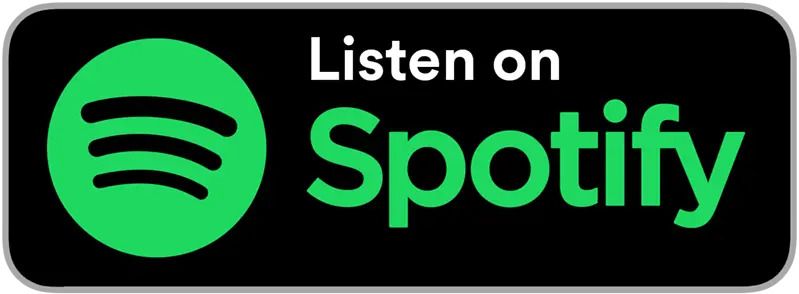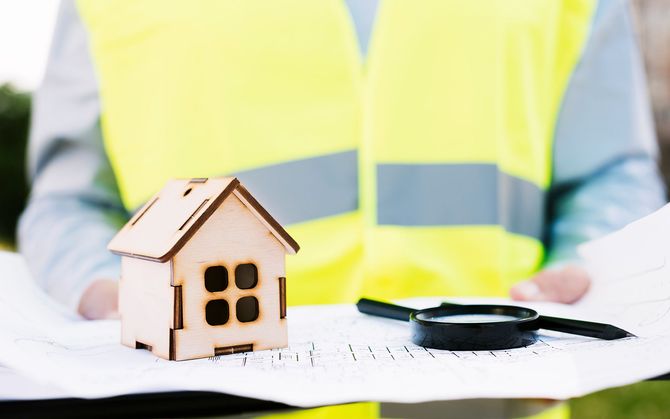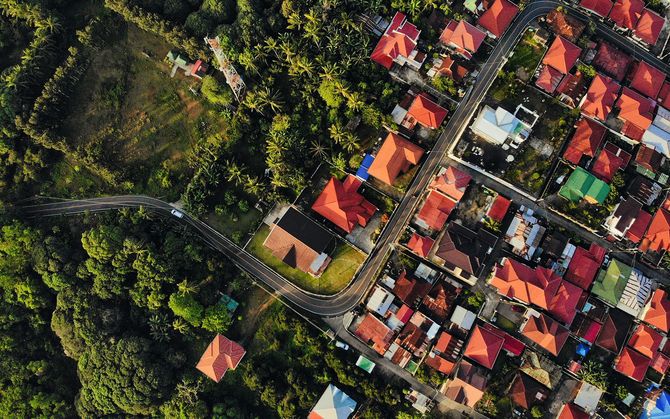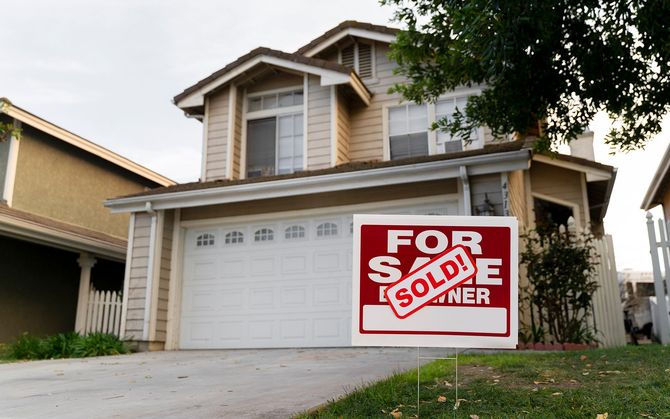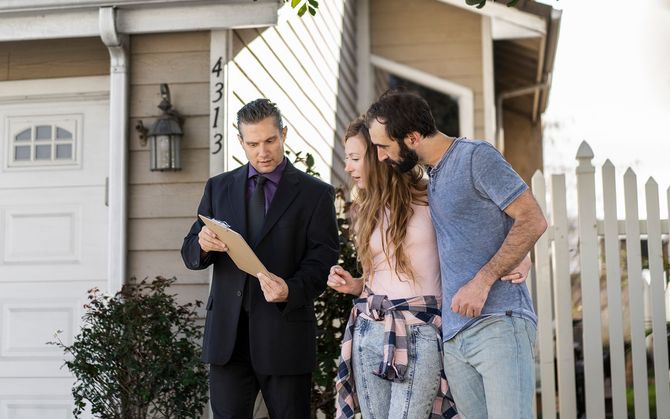Grow Your Business with Fire Damage Leads
When the sirens fade and the smoke clears, a different kind of emergency begins. For disaster restoration professionals, this critical window is a high-stakes race against the clock.
The average homeowner's insurance claim for fire damage now exceeds $83,519 in a U.S. market valued at over $200 billion. The corrosive chemistry of acidic soot starts its irreversible damage within minutes, making every second count.
Success in this environment hinges on a systematic approach to lead acquisition, not luck. It requires a thorough understanding of different lead sources and a disciplined process for evaluating providers.
This guide offers a definitive roadmap for building a thriving business through superior strategy. We will detail the systems for
rapid response, effective conversion, and
scalable growth that turn time-sensitive opportunities into consistent revenue.
Fire Damage Lead Market Landscape And Opportunity Analysis
The fire damage lead market functions on two fundamental principles: immense scale and profound urgency. Fire damage services are a high-value pillar of the U.S. property damage restoration industry, a sector valued at over $200 billion annually.
This relentless demand is quantified by the
National Fire Protection Association (NFPA). Their data reveals that U.S. fire departments respond to a new structure fire approximately every 64 seconds, creating a perpetual need for
qualified restoration professionals.
Current Market Size And Growth Projections
The market for fire damage restoration is not just substantial; it's actively expanding. This growth is fueled by several key factors that create both widespread and concentrated demand for services. Key market drivers include:
- Climate-Related Events: An increasing frequency of disasters, particularly wildfires across the western U.S., creates concentrated surges in demand that can sustain restoration companies for extended periods.
- Consistent Incidents: Beyond large-scale events, a steady baseline of residential and commercial fires provides a stable foundation of opportunities nationwide.
This shifting scenario creates a clear growth trajectory, expanding opportunities for companies that master
lead capture and conversion.
Seasonal Patterns And Regional Variations In Fire Incidents
Demand for fire damage restoration is not uniform. It fluctuates based on predictable seasonal and regional patterns that smart businesses can anticipate.
- Seasonal Peaks: Demand often increases during colder winter months due to heating-related fires. It also surges during dry summer and fall seasons, which see a rise in wildfire-related damage.
- Regional Variations: Some areas experience higher rates of specific incidents like kitchen or electrical fires. Others are defined by their consistent exposure to natural disasters.
Effective
lead generation strategies are built on these patterns. They allow businesses to anticipate demand shifts and allocate marketing resources for maximum impact in localized markets.
Competition Intensity And Market Saturation Levels
The lucrative nature of fire restoration has created a fiercely competitive terrain. The market is an adaptive mix of large national franchises and a vast number of independent contractors, all competing for the same high-value leads.
The battleground for lead acquisition has decisively shifted. Traditional methods like monitoring emergency scanners have been replaced by sophisticated digital channels where speed and visibility are everything. Dominance in this arena now demands expertise in platforms such as:
- Search Engine Optimization (SEO)
- Pay-Per-Click (PPC) Advertising
- Google's Local Services Ads (LSA)
Profit Margins And Revenue Potential Per Lead Type
The financial incentive for pursuing fire damage leads is exceptionally strong, driven by high-value projects. A typical restoration job can range from $3,000 for minor smoke damage to over $75,000 for incidents involving significant structural compromise.
A substantial portion of these costs is typically covered by property insurance. This financial backing significantly increases the likelihood that a qualified lead converts into a paid project. This high revenue potential directly shapes the value of different lead types.
Exclusive, real-time leads are in growing demand because they offer a critical first-mover advantage and boast significantly higher conversion rates than their shared or aged counterparts, justifying a premium investment.
Types And Categories Of Fire Damage Leads
Not all fire damage leads are created equal. Their value, cost, and conversion potential hinge directly on their origin, timeliness, and distribution model.
For restoration companies, mastering these distinctions is the cornerstone of a cost-effective and scalable
lead acquisition strategy. A nuanced understanding allows a business to invest resources wisely, targeting lead categories that align with its operational capacity and growth objectives.
Residential Fire Damage Leads By Property Type
Residential leads are the most common and form the backbone of the restoration industry, providing a consistent stream of work. These opportunities originate from incidents in properties such as:
- Single-family homes
- Condominiums and townhouses
- Apartment units
While the scope of a single job may be smaller than a commercial project, their high frequency is invaluable. Multi-family properties like large apartment buildings present unique intricacies, as a single fire can damage multiple units and create a large-scale project requiring careful coordination with property management.
Commercial And Industrial Fire Damage Opportunities
Commercial and industrial fire damage leads represent higher-value, though less frequent, opportunities. These incidents affect a wide range of properties, including office buildings, retail stores, warehouses, and manufacturing facilities.
The projects are often significantly larger in scope and may involve specialized equipment for cleaning industrial machinery or restoring sensitive electronics. While the revenue from one commercial lead can be substantial, these jobs typically involve longer sales cycles, complex insurance negotiations, and stricter compliance requirements.
Real-Time Versus Aged Lead Classifications
A lead's timeliness is perhaps the single most critical factor in its viability. The distinction between real-time and aged leads directly impacts conversion strategy and success rates.
- Real-Time Leads: Generated and delivered within minutes of a fire, these leads are the most valuable. Property owners are in a state of crisis and are highly motivated to hire the first qualified contractor who responds, resulting in the highest conversion rates.
- Aged Leads: These leads refer to fire incidents from several days or weeks prior and are sold at a steep discount. The probability of conversion is much lower, as the owner may have already hired a competitor or is no longer in an emergency mindset. However, they can present an opportunity for companies with persistent follow-up systems to capture business others have missed.
Exclusive Versus Shared Lead Distribution Models
The distribution model dictates the level of competition a contractor faces from the moment a lead is received.
- Exclusive Leads: Sold to only one restoration company, this model eliminates the immediate race against competitors. It allows a contractor to focus on building rapport and thoroughly assessing the owner's needs.
- Advantage: Lack of direct competition significantly increases the likelihood of securing the job.
- Disadvantage: They command the highest price per lead.
- Shared Leads: Distributed to multiple contractors simultaneously, this model transforms the sales process into a race. The first company to make contact often has the decisive advantage.
- Advantage: These leads are less expensive on a per-lead basis.
- Disadvantage: Their value is diluted by intense competition, requiring an exceptionally fast response protocol to be profitable.
Lead Generation Strategies And Channel Optimization
A sustainable flow of high-value fire damage leads is not the result of a single tactic. It comes from a deliberately diversified and optimized strategy.
Successful restoration firms build a resilient lead generation engine by combining proactive brand-building with reactive, rapid-response channels. This multi-pronged approach ensures that whether a client is searching online in a crisis or seeking a referral, your company is positioned to be their first call.
Digital Marketing Channels For Fire Damage Lead Acquisition
In the immediate aftermath of a fire, distressed property owners turn to the internet as their primary resource. Digital marketing is designed to capture this high-intent search traffic with precision. Key digital channels include:
- Pay-Per-Click (PPC) Advertising: Platforms like Google Ads place your company at the top of search results for critical keywords such as "emergency fire restoration." With precise geo-targeting, ad spend can be focused on specific cities or neighborhoods immediately following a reported incident.
- Search Engine Optimization (SEO): A strategic, sustained investment in local SEO, focused on a precisely curated Google Business Profile, is essential. This profile builds trust and visibility through positive reviews, photos of completed jobs, and accurate service information, attracting organic clicks.
Advanced strategies like remarketing can also re-engage website visitors who did not make contact on their first visit. This tactic effectively keeps your brand top-of-mind as they continue their decision-making process.
Traditional Marketing And Networking Approaches
While digital channels offer immediacy, traditional methods build crucial local brand recognition and trust over time. The simple visibility of professionally wrapped company vehicles in a community, for instance, serves as a constant, passive advertisement.
The most potent traditional strategy, however, is professional networking. Building a robust network of plumbers, roofers, and property managers creates a powerful stream of high-quality referral leads. These relationships are not built overnight; they are cultivated through consistent, excellent service and mutual trust.
Emergency Response Partnerships And Referral Networks
The most valuable leads often originate from trusted advisors during a crisis. For this reason, establishing formal referral partnerships is a cornerstone of elite restoration businesses.
Building strong relationships with insurance agents and public adjusters is particularly effective, as they are among the first professionals a property owner contacts. A referral from an agent carries significant weight and can bypass the competitive bidding process entirely.
Some of the most effective strategies involve leveraging technology for a competitive edge. Services that monitor emergency response radio frequencies provide real-time alerts of fire events, enabling a restoration team to respond with incredible speed.
Content Marketing And Educational Outreach Programs
Content marketing is a long-term strategy focused on establishing authority and building trust before a disaster ever occurs. This is achieved by creating genuinely helpful resources, such as detailed blog posts or guides on "what to do after a house fire."
Educational content positions a restoration company as an expert advisor, not just a service provider. It attracts organic search traffic, builds brand credibility, and serves as a valuable resource for referral partners, transforming a company from a reactive service into a proactive community resource.
Lead Provider Evaluation And Selection Criteria
Partnering with a third-party lead provider can be a key trigger for business growth, but this strategic decision requires a precise and comprehensive assessment. The quality of leads varies dramatically between sources, and your chosen provider directly impacts return on investment, operational efficiency, and even your brand's reputation.
A thorough assessment looks beyond the simple cost per lead to scrutinize a provider's
verification processes,
contract terms, and
technological capabilities. Selecting the right partner is not about buying a list of names; it is an investment in a reliable stream of
verified, high-value opportunities.
Pricing Models And Cost-Per-Lead Analysis
The financial structure of a lead generation service is a foundational consideration. Most providers operate on a Pay-Per-Lead (PPL) model, where you pay a predetermined price for each qualified lead they deliver.
The cost for a single fire damage lead can range from a few hundred to over a thousand dollars. This wide variance is dictated by several factors, with lead exclusivity being the most significant.
- Exclusive Leads: These are sold to only one restoration contractor. This model eliminates immediate competition and substantially increases the probability of securing the job.
- Shared Leads: These are sold to multiple companies (often three to five) at the same time, creating a race to be the first to respond. While less expensive, shared leads inherently come with lower conversion rates.
The highest-value opportunities—exclusive, real-time leads for large-loss commercial properties—will always command a premium. Some providers may offer alternative models like monthly subscriptions or revenue-sharing agreements, but a clear analysis of cost versus potential return remains essential.
Lead Quality Verification And Validation Systems
The ultimate value of any lead is determined by its quality. A genuinely "qualified" lead represents a property owner or authorized decision-maker with a legitimate, recent fire damage issue who has explicitly requested service in your territory.
Reputable lead providers employ robust verification systems to filter out irrelevant inquiries and confirm a caller's intent. This process often involves:
- Live operators to confirm the caller's details, location, and the nature of the damage.
- Sophisticated call-recording systems to validate the request before the lead is dispatched.
A critical component of any service agreement is a clear policy for returning or receiving credit for invalid leads, such as wrong numbers or requests for services you do not offer. The
speed of delivery is also a key metric of quality; leads delivered in real-time, within seconds of the initial inquiry, have a significantly higher conversion rate than those that are delayed.
Geographic Coverage And Territory Management
Effective lead generation hinges on precision targeting. A quality provider must offer granular control over your service area, ensuring you only pay for leads that your team can realistically and profitably service. Key territory management features to look for include:
- Geographic Definition: The ability to define your service area by specific zip codes, cities, or a set radius around your office.
- Advanced Filtering: Options to specify the types of leads you want, such as residential versus commercial properties or specific damage like kitchen fires.
- Workflow Control: The flexibility to pause or place a cap on the number of leads you receive, allowing you to scale your marketing spend based on your team's capacity.
Contract Terms And Service Level Agreements
Before committing to any provider, a detailed review of the contract and service level agreement (SLA) is non-negotiable. A provider's transparency and reputation are key indicators of reliability and long-term value. Pay close attention to the following contractual and operational details:
- Contract Terms: Scrutinize the contract length, cancellation policies, and the specific process for disputing invalid leads.
- Provider Reputation: Seek out online reviews, ask for case studies, and request references from other restoration contractors.
- Lead Generation Methods: A transparent provider will be open about their methods, whether through their own web properties, SEO, or PPC advertising.
Support and Technology: Accessible customer support is crucial for resolving issues quickly. The provider's platform should also ideally integrate with your
Customer Relationship Management (CRM) software to streamline your entire workflow.
Lead Conversion Optimization And Response Management
Securing a high-quality fire damage lead is just the starting pistol in a high-stakes race against time and competition.
The process of converting that inquiry into a signed contract—conversion optimization—is where operational excellence truly distinguishes a top-tier restoration business. This requires a disciplined response management system built for the unique circumstances of a fire.
The property owner is not a typical customer; they are moving through a traumatic event and need a response that is immediate, empathetic, and profoundly reassuring.
Response Time Standards And Emergency Protocols
In the fire damage restoration industry, speed is the ultimate currency. Industry experience has established a clear standard: responding to a lead within the first five minutes is critical for success.
The first contractor to make meaningful contact with a distressed property owner has a substantially higher probability of securing the job. Because fires occur at all hours, a genuine 24/7/365 operational capacity is non-negotiable; a simple after-hours voicemail is no longer sufficient.
An effective protocol involves a system, like a live answering service or automated text, that immediately acknowledges the inquiry. This simple action confirms their message was received and sets the expectation for a prompt callback, preventing them from moving to the next company on their list.
Lead Qualification And Prioritization Systems
Not all fire damage leads carry the same urgency or value. An internal qualification and prioritization system is essential for allocating resources with maximum efficiency. During the initial contact, your team must be trained to gather key qualifying information beyond basic contact details. This includes:
- The property address for location assessment.
- The name of their insurance provider.
- A brief but clear description of the damage.
This data allows for a rapid assessment of the project's potential scope and helps prioritize the response.
A large commercial loss, for example, may require the immediate dispatch of a senior project manager, while a smaller residential kitchen fire can be handled by a different team member, ensuring your most valuable resources are directed toward the most significant opportunities.
Customer Communication And Follow-Up Strategies
The initial phone call sets the tone for the entire client relationship. The first priority must always be empathy—confirming the safety of the occupants before ever discussing the property itself. This human-centric approach builds immediate trust.
Once rapport is established, the conversation can shift to the primary objective: scheduling an in-person site assessment to evaluate the damage and provide an accurate estimate.
For leads not ready to commit immediately, a structured follow-up process is crucial. A
Customer Relationship Management (CRM) system that tracks all interactions ensures no opportunity is lost, enabling a persistent yet professional follow-up cadence that keeps your company top-of-mind.
Insurance Claim Navigation And Documentation Support
For a property owner, guiding an insurance claim is one of the most stressful parts of the recovery process. By offering expert guidance, a restoration company provides immense value and can clearly differentiate itself from the competition. This involves acting as an advocate for the client, not just a contractor.
Assisting with necessary paperwork, communicating directly with the insurance adjuster, and providing detailed, professional reports can alleviate a significant burden from the property owner. This level of support transforms the relationship from a simple transaction into a trusted partnership, solidifying your position and often ensuring you secure the job.
Performance Tracking and Business Growth Scaling
A steady stream of leads signals a healthy business. A scalable, data-driven system for managing that stream, however, is the mark of an industry leader.
Moving beyond the daily scramble for jobs requires a strategic commitment to performance tracking, as growth without data is accidental, not intentional. By implementing a framework for measurement and optimization, a restoration company transforms its lead generation from a cost center into a predictable engine for expansion.
Key Performance Indicators and ROI Measurement
Effective management hinges on precise measurement. Key Performance Indicators (KPIs) are the crucial markers of your lead generation strategy, providing the objective data needed to guide critical business decisions. Essential metrics for any fire damage restoration company include:
- Cost Per Lead (CPL): This reveals the efficiency of each marketing channel by calculating the total marketing spend divided by the number of leads generated.
- Lead-to-Job Conversion Rate: This measures the percentage of leads that become signed contracts, directly indicating the effectiveness of your sales and emergency response processes.
- Return on Investment (ROI): As the ultimate measure of profitability, ROI compares the revenue generated from a channel against the cost of acquiring leads from it.
While CPL is a useful starting point, a more sophisticated analysis prioritizes the Average Job Value (AJV) from different sources. A cheap lead that yields a low-value job is far less desirable than a more expensive one that consistently produces large, profitable projects.
Indispensable tools like
call tracking software allow you to attribute every inbound call to its specific marketing source—be it a Google Ad, a website form, or a direct mailer. This capability is fundamental to calculating a precise and actionable ROI for every dollar you spend.
Lead Source Diversification and Risk Management
Relying on a single lead generation channel creates a critical point of failure for your entire business. Any change to that source, such as a price hike from a lead provider or a sudden search engine algorithm update, can have devastating consequences.
The solution is strategic diversification. A resilient lead generation model balances multiple sources to mitigate risk and ensure a consistent flow of opportunities, blending high-intent digital marketing with robust referral networks.
Cultivating strong relationships with
insurance agents,
plumbers, and
local fire departments forges a powerful, long-term pipeline of high-quality leads. This referral network complements your paid advertising campaigns and insulates your business from market volatility.
Seasonal Capacity Planning and Resource Allocation
Scaling a restoration business presents a dual challenge: you must increase lead volume while simultaneously expanding your capacity to deliver exceptional service. Growth is unsustainable if your operations cannot keep pace with your sales success.
As performance data reveals your most effective channels, you can confidently reallocate marketing budgets to scale them. This investment must be matched by a parallel commitment to operational resources. This includes proactively building your team and infrastructure to meet demand:
- Hiring additional IICRC-certified technicians.
- Purchasing more service vehicles.
- Acquiring specialized restoration equipment.
Effective
capacity planning ensures that when a surge of new jobs arrives, your company is prepared to execute flawlessly. This not only capitalizes on the growth opportunity but also protects your hard-won brand reputation.
Technology Integration and Automation Implementation
Growth without efficiency leads to chaos. Technology is the critical enabler of smart, manageable scaling, with a Customer Relationship Management (CRM) system acting as the central nervous system for your entire sales process.
A well-implemented CRM allows you to monitor a lead's journey from initial contact through job completion, providing invaluable data on sales cycle length, conversion bottlenecks, and lifetime customer value.
Automation can then streamline critical processes, like sending an instant confirmation text when a web form is submitted or scheduling follow-up reminders for your team. This technological backbone must be paired with a commitment to continuous optimization.
Regularly conducting A/B tests on digital ads, landing pages, and calls-to-action allows you to systematically improve conversion rates and lower your CPL, ensuring your growth is not just rapid but increasingly profitable.
Frequently Asked Questions
What is the typical response time required for fire damage leads to remain viable?
The industry benchmark for contacting a new fire damage lead is within five minutes of receipt. Property owners in an emergency are actively seeking immediate help and will contact multiple restoration companies.
The probability of converting a lead into a secured job drops significantly after the first hour, making speed-to-lead a critical performance metric. In my experience, the first contractor to establish meaningful contact almost always wins the project.
How do exclusive fire damage leads differ from shared leads in terms of conversion rates?
Exclusive leads are sold to a single restoration company, which entirely eliminates direct competition for that job from other contractors on the same lead platform. Shared leads, by contrast, are sent to multiple companies—often three to five—creating intense, immediate competition.
As a result, exclusive leads consistently produce a significantly higher conversion rate. While exact figures depend on the market, high-intent exclusive leads can convert at a rate several times higher than their shared counterparts.
What are the average costs associated with purchasing fire damage leads across different markets?
The cost for a single fire damage lead varies widely, from $250 to over $1,500. Price is directly influenced by several key factors:
- Geographic location: Leads in dense, high-value markets typically cost more.
- Exclusivity: Exclusive leads command a premium over shared leads.
- Scope of damage: The verified extent of the fire damage impacts the lead’s value.
Pricing models also differ among providers and may include a pay-per-lead structure, a monthly subscription, or a percentage of the final job value.
How can restoration companies verify the quality and legitimacy of fire damage leads before purchase?
A robust lead qualification process is essential. This involves not only confirming the caller's name, phone number, and property address but also asking direct questions to verify that a fire occurred and that the owner hasn't already hired a competitor.
Reputable lead providers should offer a return policy, providing credit for invalid leads like wrong numbers or jobs outside your service area. When available, listening to call recordings is the most direct method for assessing a caller's intent and the legitimacy of their need.
What insurance considerations should be addressed when working with fire damage leads?
You must immediately determine if the property owner has filed an insurance claim. Understanding the specifics of the homeowner's policy is critical, as the payment structure depends on whether it is a Replacement Cost Value (RCV) or Actual Cash Value (ACV) policy.
Establishing direct communication with the insurance adjuster is necessary to align on the scope of work and cost estimates. Detailed and thorough documentation—including photos, precise line-item estimates, and signed work authorizations—is non-negotiable for ensuring a smooth claims process.
Conclusion
Thriving in the high-value, multi-billion-dollar fire damage restoration market demands a sophisticated strategy, not mere opportunism. Lasting success is built on a foundation of deliberate, systematic action.
A restoration company positions itself for consistent revenue and sustainable leadership by focusing on several key pillars:
- Diversified Lead Generation: Combine an agile digital marketing presence with robust referral networks to create a resilient and steady pipeline of opportunities.
- Unwavering Rapid Response: Make immediate action a fundamental operational strategy, as response time is a critical factor in securing high-value contracts.
- Performance-Driven Optimization: Continuously track performance metrics and refine conversion processes, transforming lead acquisition from a cost center into a powerful growth engine.
Ultimately, the most successful firms implement a disciplined approach to
lead management. Carefully balancing the cost of acquisition with the quality of the opportunity is what separates market leaders from the competition.



